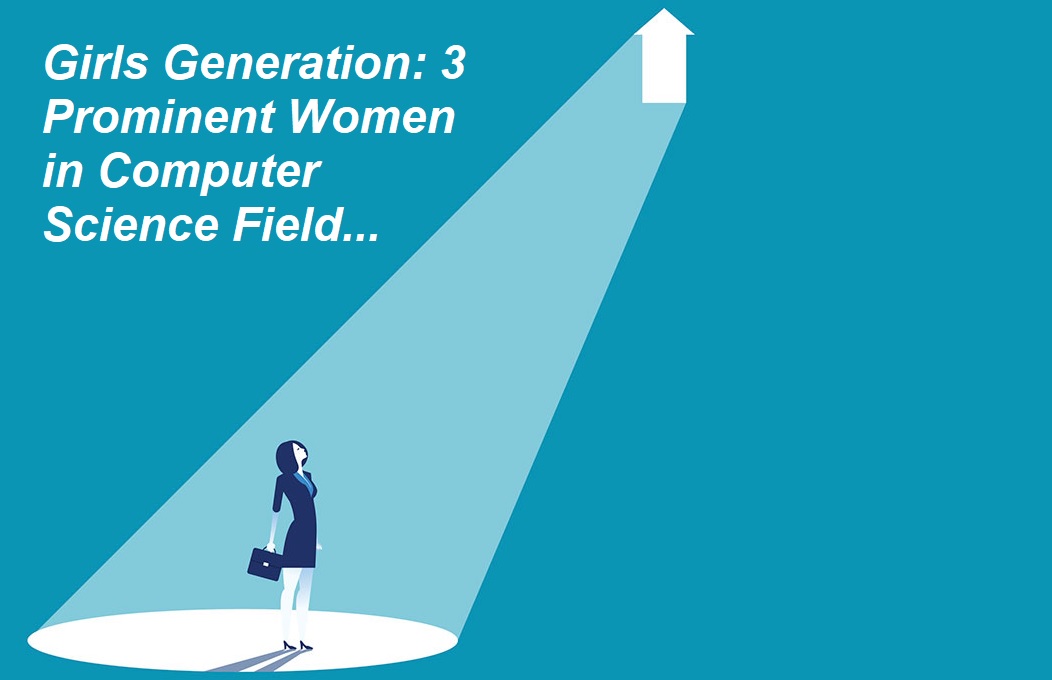Today we celebrate the female genius in complex calculations and perplexing algorithms.
Women have been crunching numbers for quite a long time. The first well-recorded female mathematician Hypatia of Alexandria — or “Pythagoras in a skirt” as some called her — was well-known during her time (350–370 — 415 AD). Even though Hypatia left no outstanding works, she was an important figure as she taught a good bunch of students, edited Ptolemy's folio Almagest and even constructed an astrolabe — a great-grandfather of today’s GPS.
But Hypatia isn’t the only one. Let’s review famous women who have contributed important discoveries and works to the computer science of today: from spoofing detection to programming languages.
Girls’ Generation: 3 Prominent Women in Computer Science
1. Lady Ada Lovelace
Little Ada was the daughter of Lord Byron — one of the greatest of England’s poets, a political troublemaker, and a veteran of Greece’s liberation war. Perhaps, Ada inherited the rebellious spirit from her dad as she was different from other girls.
She didn’t care for porcelain dolls delivered from Vienna’s Alsergrund — her passion was situated in Peano arithmetic, projective geometry, and real analysis.
When she was 12, Ada suddenly decided that she wanted to fly. She approached the project seriously, sampled various materials to construct wings, searched for the shortest flight path across England, and even sat to write a detailed report on her endeavors titled Flyology.
But what she is truly famous for is proposing in 1843 what is believed to be the first computer algorithm in history. After meeting Charles Babbage — inventor of the mechanical computers — she began contributing “notes” to aid his projects.
Her algorithm solved this equation to calculate the eighth Bernoulli number:
B7= −1(A0+B1A1+B3A3+B5A5)
Although some programs were authored by Babbage and Luigi Maneabrea prior to 1843, Lovelace’s algorithm is seen as the first complex program consisting of 25 operations and a nested loop, the concept of which is used in today’s programming for displaying multidimensional data.
2. Grace Hopper
There’s a cavalcade of programming languages today: from Malbolge named after the eighth circle of hell in Divine Comedy to student-friendly JS. But none of them would exist today even if it wasn't for Grace Hopper’s work.
Nicknamed “Amazing Grace”, she was employed as one of the three main programmers who tinkered with the Harvard Mark I — one of the first electromechanical computers ever built during WWII. Back then the code with instructions was recorded on punched paper tape and then fed to the computer.
Basically, it was a 16-meter (52.4 feet) tall calculator, which helped the military with missile trajectories, surveillance systems, sensitive radars, and implosion units for the nuclear bomb.
After the war, Hopper worked on UNIVAC I (Universal Automatic Computer) and at that time her research team developed the first compiler A-0. This thing translated mathematical abracadabra of computer code in clear binary instructions in machine language. Simply put, A-0 would allow different computers to understand the same commands.
Her next achievement was designing Flow-Matic — a programming language “for people” who weren't mathematicians and other highbrow folks. It employed commands written in plain English language. Later the simplicity concept was echoed in COBOL — Common Business-Oriented Language — to which Hopper also contributed. In 2020 COBOL saw a surprising revival.
3. Dorothy E. Denning
We use biometrics quite often these days to shop or authorize banking operations. None of this would be possible without biometric security, to which Dorothy Denning dedicated her life.
Biometrics greatly rely on the concept of liveness — a group of human body signals that prove that you’re alive. When these signals are scanned and analyzed, a security system confirms that it’s dealing with a living-breathing person and not some sort of forgery: deepfake, a severed finger, synthetic voice, etc.
The concept was first introduced by Dennings in her work It’s Liveness, not Secrecy that Counts, which postulated the idea and proved its importance. Today, liveness detection and anti-spoofing are two main bulwarks that protect our biometrics from being stolen, falsified, and abused.
But female talent isn’t limited to these three names only. Joy Buolamwini, Ida Rhodes, Evelyn Boyd Granville, Ellen Ochoa — there are plenty more names to review in the future.








COMMENTS